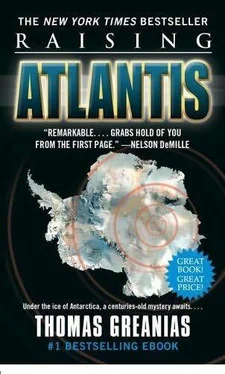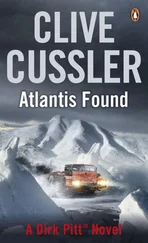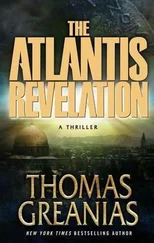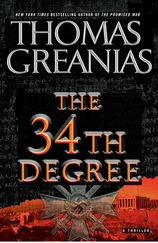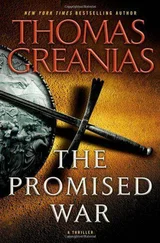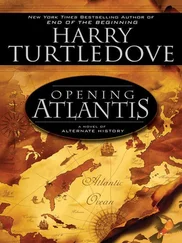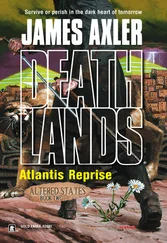“And this happens every twelve thousand years or so?”
“No, every forty-one thousand years,” Larson said, who had suddenly hit his own threshold and run out of gas. He plopped down on a seat. “We aren’t due for an ECD for another thirty thousand years. Somehow the cycle has been accelerated. I don’t know how.”
Neither did Warren. But he was pretty damn sure who was responsible. “And how soon until we reach threshold?” Warren demanded. “What kind of count-down are we talking about here?”
“The ECD should reach threshold by dawn tomorrow morning.” Larson started counting on his fingers with a glazed look in his eyes. “Damn, that’s less than fifteen hours. One last night to get lucky before it all goes poof.”
Admiral Warren could only stare at the kid in the hope that his Ph.D. stood for Piled Higher and Deeper. Otherwise, they were all out of luck.
Dawn Minus Fourteen Hours
Serena paced back and forth across the floor of the geodesic star chamber while she waited for Conrad to return.
Something had gone horribly wrong. She could smell it in the air and feel it in her bones. Something on a large scale, something very profound, had occurred. Her stomach felt terribly unsettled, like it did when she didn’t eat or drink anything for hours except one cup of espresso after another. If only she had acted on her doubts earlier, or been more persuasive with Conrad, or stalled Yeats longer.
As she paced and pondered, she eyed the empty altar in the center of the room uneasily. In one terrifying moment it had opened up like the pit of hell and incinerated Kovich and swallowed Yeats.
Perhaps it was a geothermal vent of sorts, something that could tap the heat of Earth’s interior and harness its power. After all, the most advanced fuel cells ever devised by human engineers generated the by-products of heat and water. P4 certainly had plenty of both.
In any case, she concluded, P4 was following the preprogrammed instructions of its builders, whoever they were. And it was clearly intended to create some kind of global extinction event unless humanity could come up with some kind of “most noble” moment to justify its existence.
Looking to her left and her right, she reached into her pack and pulled out the Scepter of Osiris. She held the gleaming obelisk in her hands. For some intuitive reason she had lied and failed to tell Conrad she had it.
She moved over to the empty altar and eased the scepter into its rotund alike base. There was a rumbling as the geodesic star ceiling whirled. She tried to reset the heavens as they appeared before Conrad removed the obelisk. The whirling stopped and she waited. Nothing happened. Whatever Conrad did could not be reversed. So much for her virginity. Clearly she was no more “worthy” than he was.
She removed the obelisk from the altar and felt a shudder from the wall behind her. She turned to see the four chamber doors open in a row.
For a long minute she stood there, frozen, wondering what to do. Then she looked at the obelisk in her hands. Something about it seemed different. The side with the four suns had changed. Now there were six, the sixth sun being the largest. Her worst fears had been realized: a new age was dawning, which could only spell the end for the old age.
What had not changed was the inscription that said the Scepter of Osiris belonged in the Shrine of the First Sun. Somewhere nearby, she realized, was a structure like P4, a monument to an epoch in time. If P4 was the Pyramid of the Fourth Sun, then the Shrine of the First Sun must have been built during the First Time or Genesis. If Conrad was right, then Genesis simply had to be the “most worthy time,” since in the beginning God looked upon creation and said it was “good.”
She had to find this Shrine of the First Sun and its secret, she resolved. Then she could reset the star chamber to the most worthy time and stop whatever was happening.
But where was this shrine and how would she even recognize it?
Conrad would know. She walked over to the square patch of sunlight beneath the southern shaft and with her eyes followed Conrad’s line up the shaft. There was a flicker of daylight at the other end. What was taking him so long?
Serena turned from the shaft and surveyed the empty chamber. There on the floor was Yeats’s backpack. She had already rummaged through it once, but now she noticed that the lining in back didn’t look right. Upon closer inspection she realized there was something flat sewn inside.
She pulled out a military knife from the same pack and used it to slash through the lining. Inside she found a folded blueprint of some sort. It appeared to be a technical schematic of some kind of pillar. Then, all of a sudden, she recognized the “pillar” as the obelisk in her hand, complete with the rotunda at its base.
As she suspected, the Americans knew far more about this place than Yeats admitted. Clearly Yeats had this blueprint before they even entered P4, much less found the obelisk. Somehow Yeats knew the Scepter of Osiris was down here before he ever saw it.
Surely Yeats’s crazy story about finding Conrad in the ice wasn’t true, she told herself. It was simply a ploy to play on Conrad’s emotions during a crisis situation. Even Conrad thought as much.
But there was something Conrad had mumbled before he woke up, something she had been pondering ever since. It had sounded like a moan made in pain. But there was something about the structure and syntax and accent of the sound that rang familiar. And now as she thought about it, she realized Conrad had been repeating the word Mama in some kind of pre-Aymaran form. But there was no way Conrad could know that.
A chill shot up her spine. Maybe Conrad was an Atlantean after all. Or maybe she was crazy. She picked up the obelisk and compared it to the blueprint. They looked identical, except for the markings, which, as she had just seen, possessed the ability to change.
Serena opened her pack and removed her coffee thermos. She twisted the outer shell until it unlocked and then slid it off like a sheath. She then rolled the blueprint around the outside of the inner tube and slid the outer shell back on, twisting it until it locked. It was a hiding place she had learned to rely on more than once in her journeys. Then she placed the thermos back into her pack.
She looked up at the southern shaft, thinking she shouldn’t leave without Conrad. But he had been gone too long, she told herself as she glanced at the open doorway. She couldn’t wait forever. And who knew where Conrad’s path of self-discovery would take his loyalties? She, on the other hand, knew exactly what she had to do. She had to take the Scepter to the Shrine of the First Sun. There she would find, she hoped, the so-called Secret of First Time that would somehow enable her to stop whatever was happening.
As for Conrad, it was clear she could not trust him, just like she could not trust Yeats. For all she knew she couldn’t trust the pope or even God. How could he let this happen-again? She thought of the girl in the ice. She couldn’t get the expression on her face out of her mind. This had happened once before, so clearly God could let it happen again. But she couldn’t.
She put the obelisk back in her pack, slung the pack over her shoulder, and stepped out of the chamber through the open door. The tunnel led her to a fork at the bottom of the great gallery, and she took the middle tunnel down and out through P4’s entrance.
When Serena emerged from the dark interior of P4 into the light of day, it seemed to her that the sun was more brilliant than ever. It was hot, but it was the dry kind of heat that she liked. Antarctica was a desert climate with or without the ice, she thought as she shaded her eyes. More likely, however, the heat originated from the vast geothermal machinery underground.
Читать дальше
